Elegoo Mars Vs Anycubic Photon
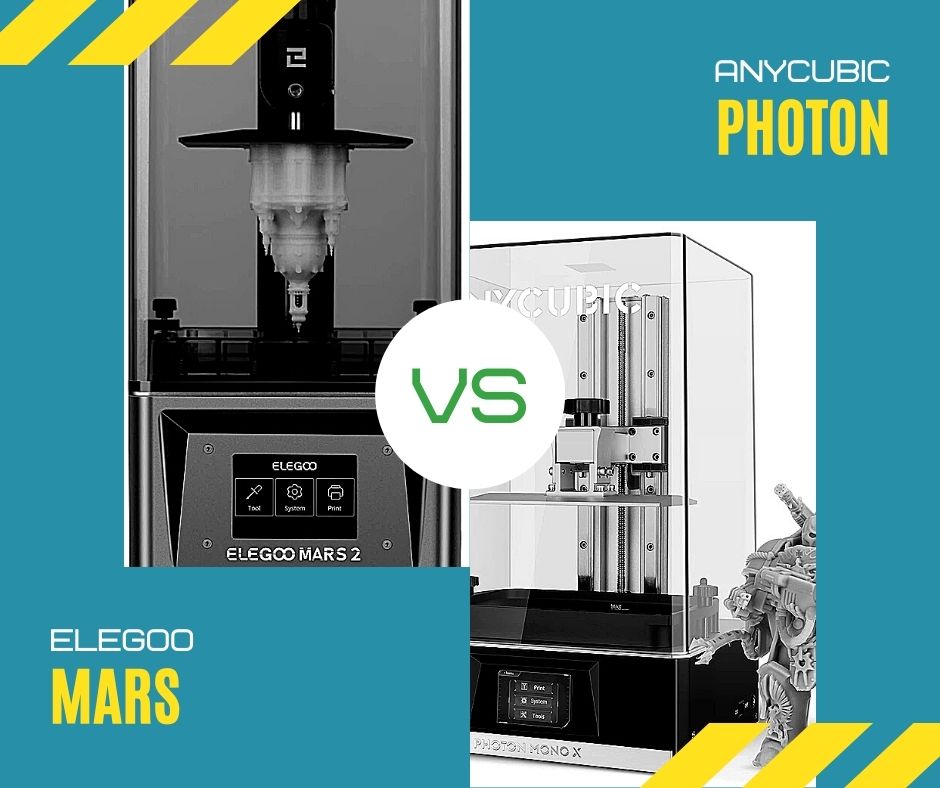
Are you in two minds about Elegoo Mars and Anycubic Photon? Today we are comparing these two popular 3D printers.
A comparative analysis will highlight the differences and similarities between the two so that you can choose which 3D suits you better.
Who will win the Elegoo Mars vs. Anycubic Photon battle?
Let’s see.
In a Hurry? Elegoo Mars Vs. Anycubic Photon Quick Summary
Elegoo Mars and Anycubic Photon stand out as one of the most popular resin 3D printers on the market.
If you’ve at least dabbled into 3D printing, you probably know about the ongoing debate on which resin 3D printer out of the two is better.
Elegoo Mars is relatively new on the market, and the hype doesn’t seem to cease. On the other hand, Anycubic Photon has been there for quite some time and has shown to be one of the best 3D resin printers since it came out.
Take a look at the main characteristics and the highlight features of both printers before you proceed to the complete review.
The criteria are put side-by-side so that you can know what to expect.
| Elegoo Mars | Anycubic Photon | |
| Printing Technology | UV Resin DLP | UV Resin DLP |
| Build Volume | 120 x 68 x 155mm | 115 x 65 x 155mm |
| Slicing Software | ChiTu Box | Proprietary software |
| Print Quality | 4/5 | 5/5 |
| Resolution | 2K (2560 x 1680 Pixels) | 2K (2560 x 1680 Pixels) |
| Speed | 22.5mm/hr | 20mm/hr |
| Price | $ | $$ |
In short, this is what the Anycubic Photon vs. Elegoo Mars battle can be put down to:
Elegoo Mars dominates with the perfect balance of its low price and excellent print quality. However, when it comes to the DLP printing process, slicing software, and the level of the details of the printed objects, Anycubic Photon – the seasoned veteran – is slightly in the lead.
This is just the preview of the main findings; to get a full picture of what we are talking about, read the complete analysis of these 3D resin printers below.
Main Differences Between Anycubic Photon and Elegoo Mars
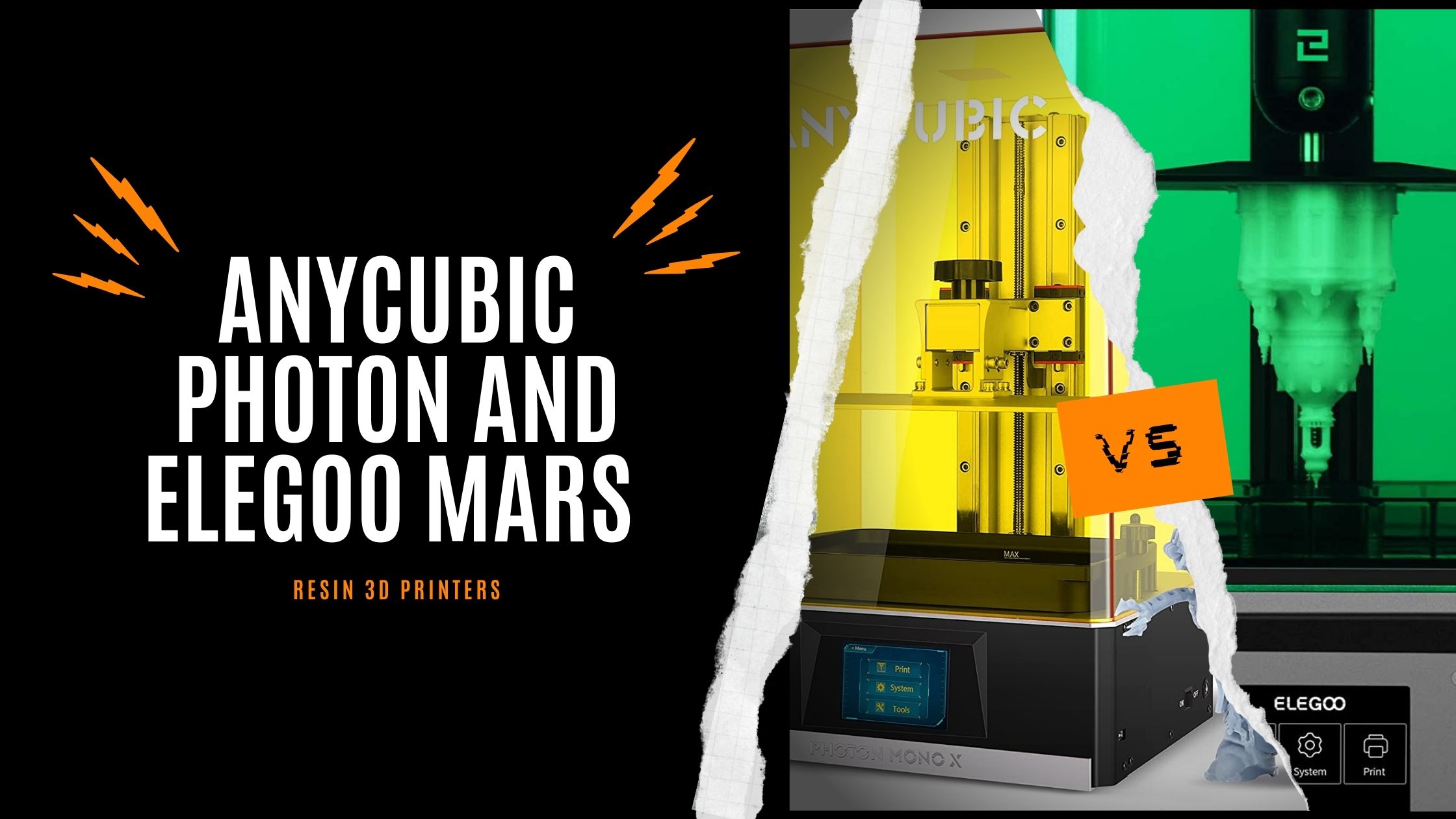
Albeit these two 3D printers have a lot of similar qualities, not everything is common threads.
Here are the main differences between Anycubic Photon and Elegoo Mars:
Build Volume
- Winner: Elegoo Mars
The build volume refers to the actual dimensions of the space in which a 3D printer can print objects. It is measured by values for the X, Y, and Z-axis.
So, how these two 3D printers score in this regard?
The build volume of Elegoo Mars is 120 x 68 x 155mm, while Photon has a build volume of 115 x 65 x 155mm.
Hence, Mars leads on the X-axis with the additional 5mm and on the Y-axis with the additional 3mm, while the Z-axis is the same for both models.
The difference may seem insignificant, but in the world of 3D printing, millimeters are everything – even if it is only an additional millimeter or two on the X and Y-axes. That’s why the Elegoo Mars printer gets bonus points here.
Objectively, though, both of these 3D printers have a relatively small build space compared to some other models. This is something to consider if you plan to print larger objects (3D FDM printers are a better option for this purpose).
However, if this build volume is enough for the size of the objects that you want to print, it’s worth it getting one of these DLP (Digital Light Processing) printers rather than much more expensive FDM printers.
Slicing Software
- Winner: Elegoo Mars
Elegoo Mars uses the ChiTu firmware that comes with the ChiTu Box print software. On the other hand, Photon uses proprietary software.
ChiTu firmware and ChiTu Box print software are pretty beginner and user-friendly. The workflow is very smooth, the print preparation is quick, and the settings are straightforward.
While there are many people who vouch for proprietary slicing software used with Photon, Elegoo Mars gets bonus points here for the simplicity.
It’s easy to make adjustments using this software, such as repositioning models without the need to delete the support that you have already placed. Mirroring, hollowing, and rotating features are very intuitive and save your time and resin volume.
What’s more, with the ChiTu Box slicer, you can create multiple printing profiles, and it displays a great print preview that includes the printing time, resin volume, and weight.
Another compelling feature of Elegoo Mars software is the anti-aliasing feature. Anti-aliasing basically enables you to make the object smoother, which results in a more realistic appearance.
Photon’s proprietary slicing software comes with default settings that account for decent print quality. The auto-generated supports are good, but you can also insert them manually if you wish. There are standard rotating, scaling, and viewing features.
Bear in mind that the proprietary slicing software only produces files that you can use on the Photon 3D resin printer and that they aren’t interchangeable.
Importing files is not an issue with either of the printers, and you’ll find that Photon’s slicer is also easy to use even if you are not tech-savvy.
Design
- Winner: Draw
Under the hood, Elegoo Mars and Photon are fairly similar, except for the differences noted in this section.
However, when it comes to the design, they are notably distinct.
Elegoo Mars has a red UV-blocking lid that’s pretty much become its signature, whereas Photon is more of a standard-looking 3D printer.
Bear in mind that you will have to remove the lid of Elegoo Mars in order to access the resin and the vat.
There’s a Latin proverb: De gustibus non est disputandum, and it pretty much applies here.
Some might like the innovative UV light lid design solution that Elegoo offers, while some might prefer the simple design of Anycubic Photon. We’ll leave that to you.
Assembly
- Winner: Anycubic Photon
As for the setup, Anycubic Photon comes pre-assembled – you don’t have to bother with installing the build plate, resin vat, or anything. It even offers a few test models you can print to get you started.
Not only does it come fully assembled, but Photon comes with a bottle of resin, too.
The only thing you need to do is screw on a tiny knob on the door, plug it in and start the print bed leveling process by removing the resin tank.
With Elegoo Mars, you need to install the build plate yourself before you can actually use the printer. To be fair, the process isn’t complicated at all. The instructions are clear and precise. It boils down to loosening a couple of screws and lowering the plate toward the bottom.
Once assembled, the print bed leveling process is similar, and you can quickly start printing.
It doesn’t come with any resin, but you’ll find that it is compatible with any 405nm UV resins.
Is the fact that Elegoo Mars does not come pre-assembled and without a bottle of resin a major disadvantage?
Probably not, considering the low price of a bottle of resin you can get nowadays. The setup isn’t long or tiresome, either. But for some, it might be a dealbreaker.
Print Quality
- Winner: Anycubic Photon
While both printers are characterized by an outstanding print quality for their price range, this is one aspect that Anycubic Photon wins.
Nevertheless, this is only visible when you are using the resin printer for thinner layers and a lot of details.
If you are creating a relatively large object with regard to the build volume, the differences between Mars and Photon will not be as obvious. You can then go ahead and increase the layer height because thick layers will turn out great with both printers.
But when it comes to detailed designs, the Photon printer truly shines.
If you have to pay attention to details in the object you are printing and lower the layer height, this printer will allow you to fine-tune it as much as you need to.
P.S. Remember that thinner layers are synonymous with more time needed for the printer to finish the job.
So, only if you are planning to do a lot of intricate projects and complex prints should you consider this factor as a decisive one and go for the Anycubic Photon Printer.
Price Point
- Winner: Elegoo Mars
Anycubic Photon is more expensive than its contender today, Elegoo Mars.
In fact, the low price point is the main part of the Elegoo Mars pros and also its main selling point.
There isn’t a uniform answer as to whether this should be the reason to buy it.
Does it have an excellent price-performance ratio? Yes. But does this mean you should automatically make a purchase? It depends.
If the details of the printed objects are of great importance to you, then you should still go for Anycubic Photon.
And if your ideas require large-scale 3D printing, then you may want to consider FDM (Fused Deposition Modeling) printers instead of resin printing technology.
Main Similarities Between Anycubic Photon and Elegoo Mars
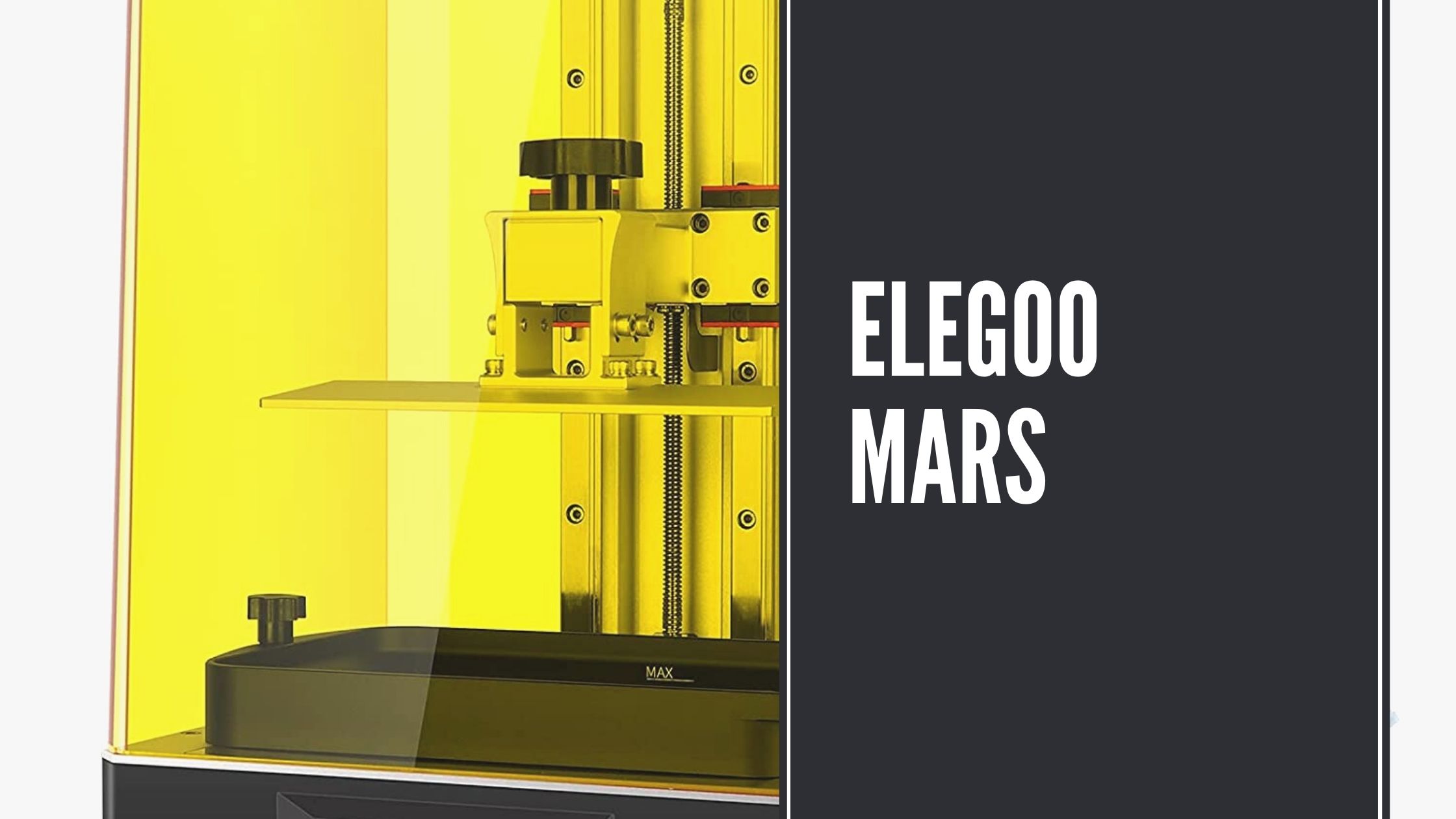
And now, let’s focus on what Elegoo Mars and Anycubic Photon share:
Printing Technology
The printers are on par when it comes to resin printing technology.
They both use liquid resin and solidify it by using a method called stereolithography via UV light and DLP (Digital Light Projection) technology.
In other words, a light source (UV light) is used to cure liquid resin into hardened plastic, aka any object that you wish to print.
Now, let’s face it: You always have to be aware that printing with a UV resin 3D printer can turn out to be a messy printing process (though it is a cleaner experience than FDM printers).
You should take the necessary caution measures such as wearing gloves when handling the resin vat, especially when you are cleaning it.
Anycubic’s printer has a carbon filter that should eliminate resin smell (which can really get strong at times), but honestly, it doesn’t make a big difference.
That’s why a mask is also recommended as well as keeping your windows open while printing.
It’s of prime importance that your resin printer nozzle is free of any remaining debris. A clogged nozzle will result in printing defects, and you will also waste your materials.
Both the Elegoo Mars printer and the Anycubic Photon printer are fairly easy to maintain.
Resolution
Another resemblance of today’s printers is their screen resolution: 2560 x 1680 Pixels.
A 2K resolution is impressive for this price range and allows you to utilize your printer to the maximum.
Elegoo Mars has a 3.5-inch color touchscreen, whereas Anycubic Photon sports a 2.8-inch color touchscreen. Both are nestled conveniently into the bodies of the resin printers, allowing you to control the printing process seamlessly due to their precision and responsiveness.
The layer resolution configuration for both models is the following: XY resolution is 47 microns, and Z-layer resolution is 10+ microns.
These values allow you to choose relatively high and low resolution according to your needs and deliver more than satisfying results in both models.
Size
The size of both machines can be described in one word: compact. OK, maybe functional, too.
Weighing around 11 lbs, these printers belong to the lightweight category.
They comfortably fit into your desk area – whatever the size of the desk – and you can move them around easily wherever you want.
The fact that you can slide these printers easily is more than useful for Elegoo Mars, considering that its USB connection port is positioned rather awkwardly at the rear.
So, if Elegoo Mars is against the wall or something like that, you’ll find yourself often sliding it forward. The good thing is that it is very stable, so there will be no risk of rocking or tipping over.
That said, while it is easy to transport the Elegoo Mars and Photon, you should always ensure that there’s no resin in the tank because it could result in spillage and potentially the emission of toxic fumes.
Connectivity
Both of these 3D printers come with a connectivity USB/SD card.
While they are similar because they both offer USB/SD card connections, there is something that should be noted here.
The USB port in Elegoo Mars is a bit unfavorably positioned. Namely, it is located on the back of the printer, which is guaranteed to elicit a number of attempts before you insert the USB stick correctly. Anycubic Photon’s USB port is much more accessible and located next to the on/off switch.
That said, the SD card slot works great on both printers.
It’s worth mentioning here that for both printers, it is the same input rating 110V/220V AC (meaning they will operate on either 110V/220V AC).
Speed
The printing speed (if we consider millimeters per hour) is similar: the Elegoo Mars 3D printer prints 22.5 mm/hr, whereas Anycubic Photon is a tad slower at 20 mm/hr.
However, this shouldn’t be considered a huge difference considering that everyone who is familiar with 3D printing knows that it is a process that requires time.
Hence, the only thing where this 1.5 mm could make a difference is for an incredibly important mass project; other than that, there’s no winner in the speed category, and it shouldn’t influence you when you make a purchase.
Warranty
Elegoo provides a straightforward warranty: 12 months on all of the parts of the Mars resin printer and 3 months on the touch screen.
Also, you can get a 14-day refund and a 30-day exchange after you’ve received the printer.
Similarly, Photon comes with the standard warranty of 12 months on the printer and 3 months on the UV technology & LCD screen.
Even though both of these resin printers are reliable, you want a guarantee like this because accidents can happen.
Besides the warranty, both manufacturers offer their technical support for any inquiries you may have, including operation, software, or any mechanical errors.
Services like these can help you avoid headaches, whatever the issue you may face. Kudos to both companies for including a wide range of support options!
Which is Better, Anycubic or Elegoo?
Elegoo Mars in the Spotlight
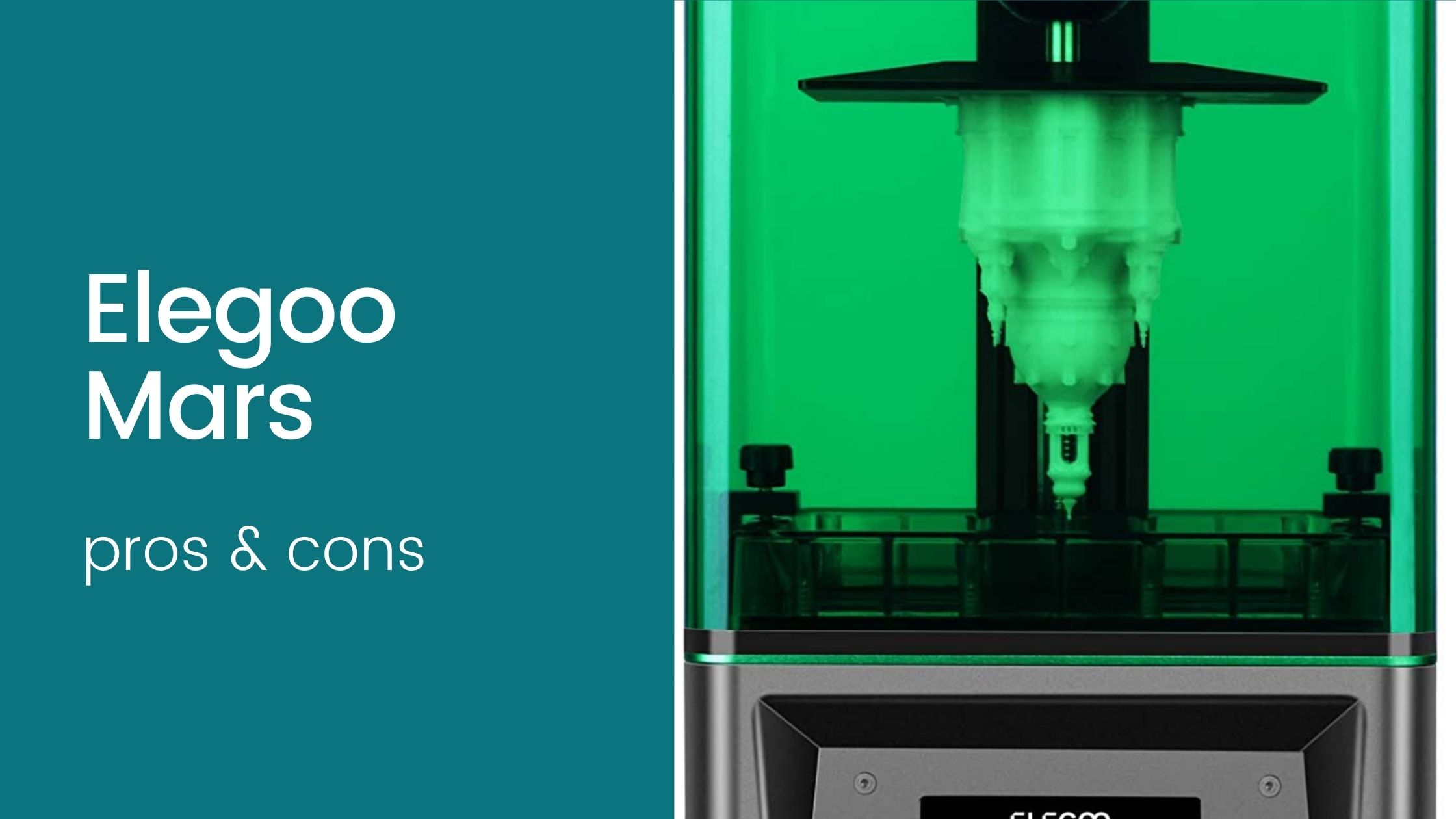
Elegoo Mars is an LCD 3D printer characterized by a recognizable and sleek design packed with excellent features.
Given its price point, it would be difficult to find a printer of this range with such a print quality (albeit the quality of the details is a little behind Anycubic).
The fan can also get a little noisy during operation, but quick and affordable results should be enough to scratch that itch.
Pros
- Simple start-up
- Excellent print quality
- Sleek UV-blocking lid
- User-friendly software
- Good overview of the printing project
- Beginner-friendly
- Low price tag
- High-quality build
Cons
- The software can experience problems with handling printing jobs one after another
- Sold without resin
- Doesn’t come fully assembled
- The position of the USB port could have been more intuitive
Anycubic Photon Getting On Stage
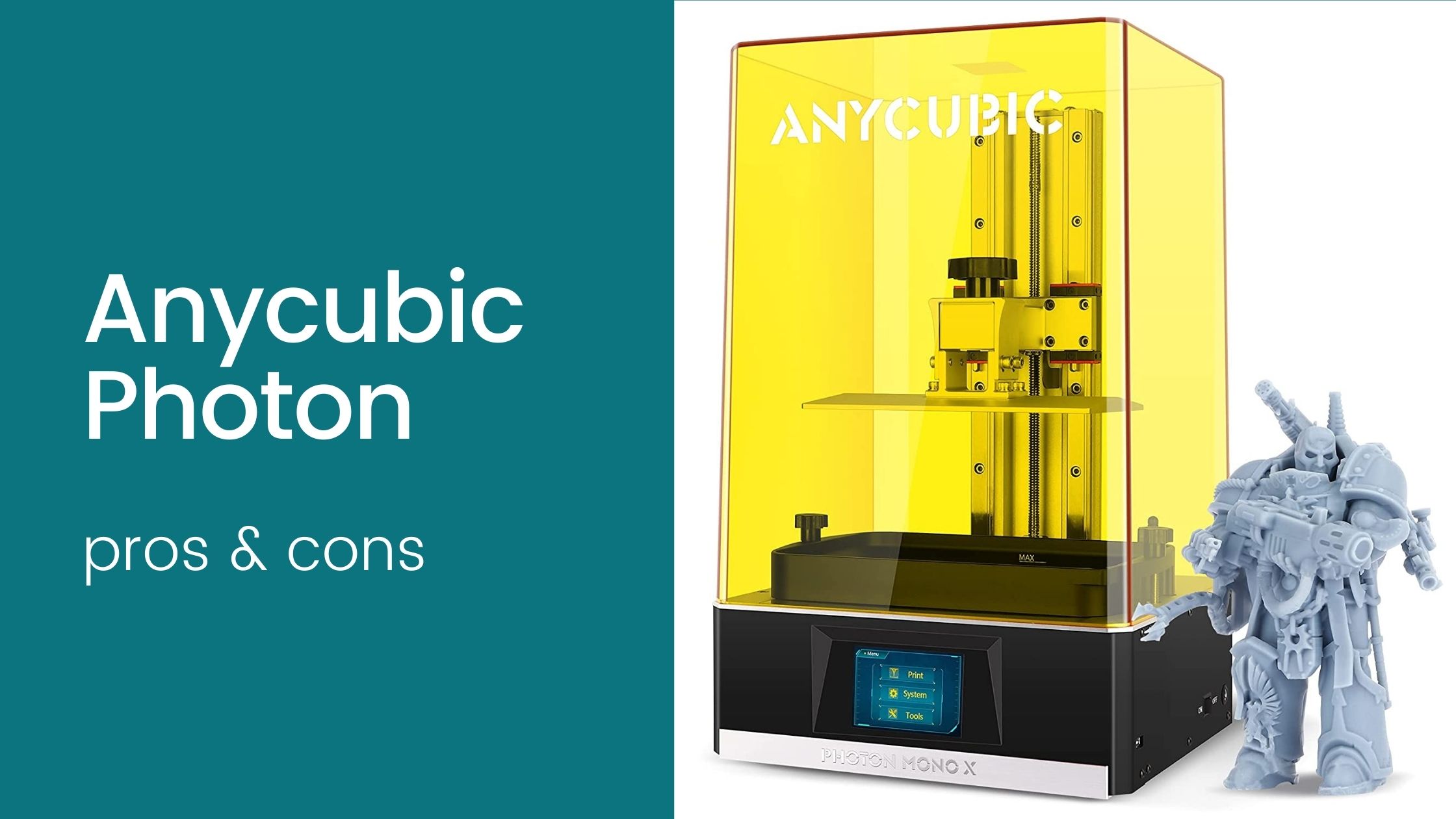
Still unbeaten in terms of print quality, this Anycubic’s LCD 3D printer is a highly recommended choice. It stands out as a remarkable 3D printer on the market and it’s truly a complete package.
To sum the findings up, let’s go over Anycubic Photon pros and cons:
Pros
- Impressive print quality
- Comes pre-assembled
- Comes with resin
- Sturdy construction
- Highly detailed elements in printing objects
- More sturdy construction
- Easy to use
- Can print offline
- Well-positioned USB port and SD card slot
Cons
- Small build volume
- The printing process can get a bit loud due to the noisy ventilation system
- We wish that the touch screen were a little more responsive
Final Verdict
It’s now time to evaluate both 3D printers and decide who will take the throne.
Both are fantastic and beginner-friendly options – but which one is right for you?
The task of choosing isn’t easy, albeit the comparison was very detailed, as Anycubic Photon and Elegoo Mars are both top-class resin printers that offer seemingly countless possibilities.
A better touch screen, higher precision, and the fact that it comes fully assembled make us slightly incline towards Anycubic Photon, but Elegoo Mars with the extra build volume is a reliable option that won’t fail to create successful projects and high-quality prints.
All things considered, you won’t make a mistake, no matter which of these 3D printers you get, as they are one of the top choices on the 3D printing market as of now!
